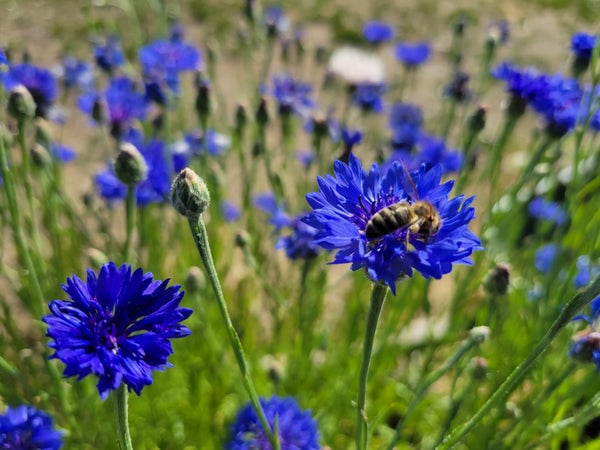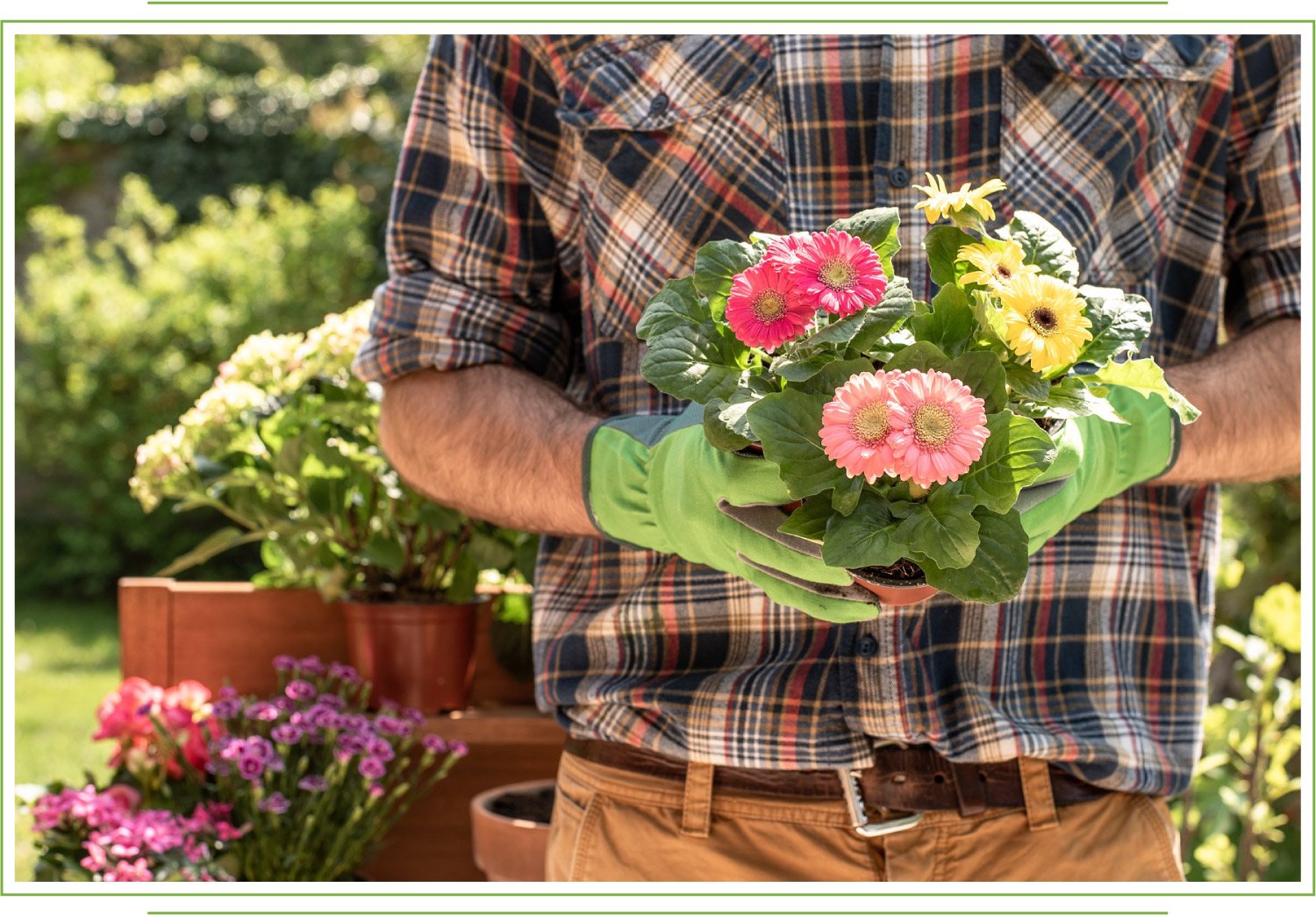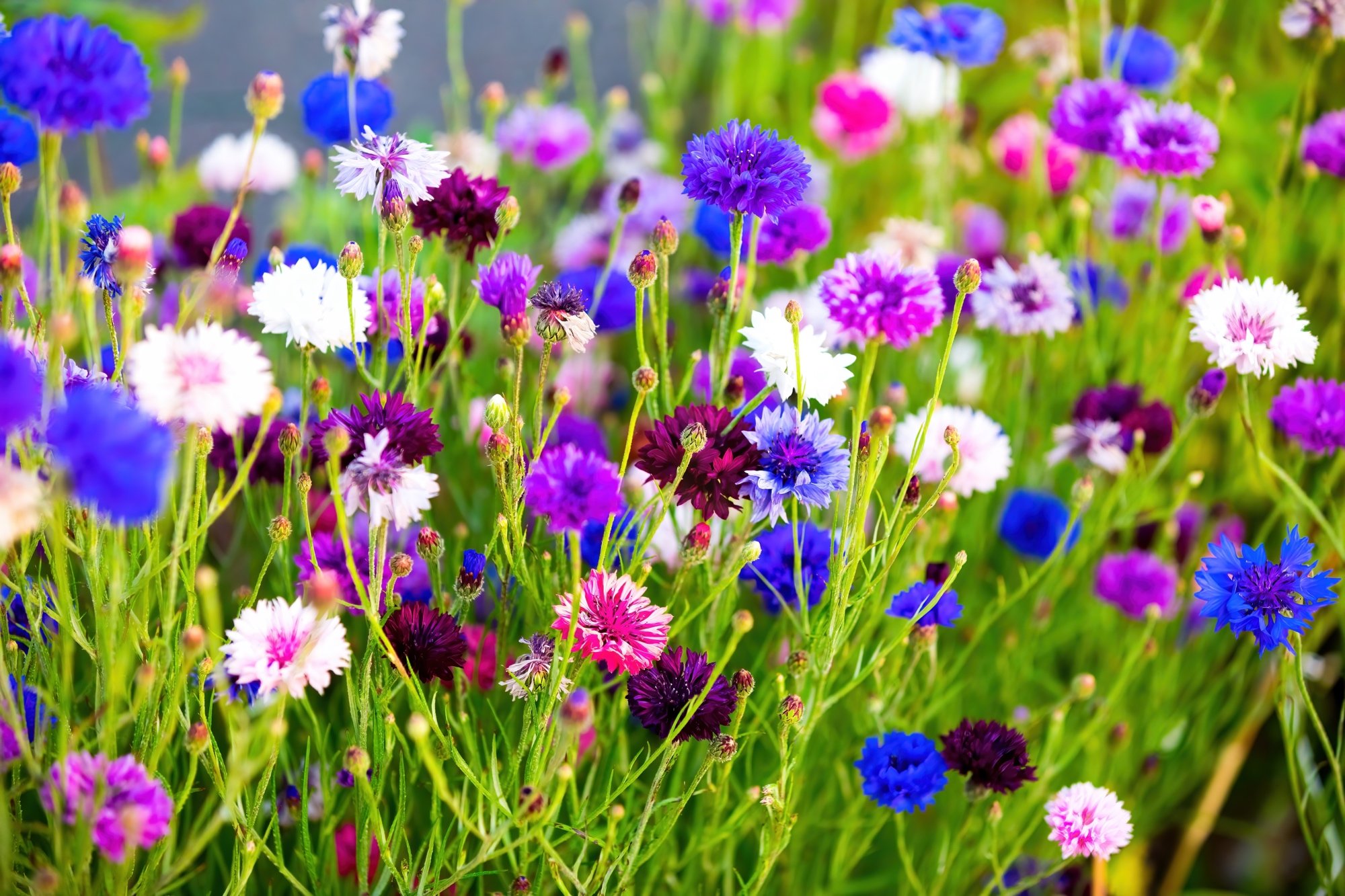How (and When) to Properly Prune Your Hellebores (3 Easy Steps)

Table of Contents
Hellebores, also known as Lenten roses! Hellebores have a variety of colours, ranging from white to black. Many places have everlasting hellebore blooms, which are aromatic. These early blossoms may be seen peeping through the snow when springs approach.
Hellebores have dense, evergreen foliage with cup-shaped, palm-like leaves that grows in a low-lying cluster. They are some of the annual flowers that bloom the earliest in warm climes, while some species may even bloom outside throughout the holiday season!
Hellebores are beautiful flowering plants that can add a touch of elegance to any garden. Proper pruning is crucial to maintain the health and beauty of these plants.
By learning how to trim and prune your Hellebores, you can help promote new growth, prevent disease, and ensure that your plants look their best all year round. Keep reading to learn some useful tips and techniques for pruning Hellebores.
Pruning Hellebores
Hellebores are a species of flowering perennial plant that blooms from winter through spring. They frequently have an evergreen nature, which means that when the new spring growth starts, the previous year’s foliage growth is still visible. However, occasionally, this might make the plants appear unpleasant. It’s a good idea to get rid of old leaves in late winter or early spring to make new growth and develop more clearly.

People often choose between two ways of pruning. Some gardeners like to remove all old leaves, while others want to maintain the foliage as long as possible. If you choose the latter, it’s crucial to keep track of the plants and get rid of any old and obsolete foliage as new leaves begin to appear, which happens around two months after flowering begins. This will help prevent a disorganised, tangled look and guarantee that your hellebores remain strong and lovely during the whole growing season.
3 Essential Steps of Pruning Hellebores
Healthy Hellebore stems don’t require pruning during the growing season. In the absence of damage or illness, allow the evergreen foliage to survive the winter months undamaged. Additionally, avoid removing the wasted flowers in the summer since the seed heads are beautiful and may liven up your landscapes. Your Hellebores may flourish and beautify your garden year after year with a little shaping and maintenance.
1. Remove the Foliage of Your Hellebores
One of the first stages of keeping a healthy, fresh appearance for your Helleborus is to cut off the greenery. The leaves may eventually begin to seem dull and old, especially as the year winds down. You can quickly remove these outdated and frequently rotting leaves with a clean pair of pruners, so don’t panic.
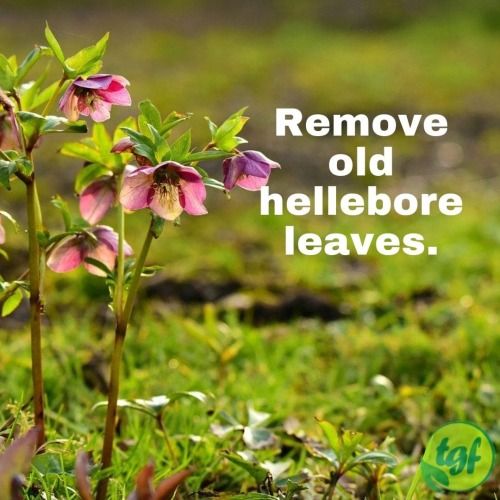
It’s essential to eliminate any sick or damaged leaf on other types of Helleborus. This is because leaf spot is a fungal disease that can harm both the leaves and the flowers, and yes, that can be a problem. To help avoid and treat the illness, it’s a good idea to prune back and remove any old or infected leaves if you see dark patches or spots on your Hellebores.
When removing leaves, use a clean, sharp pair of secateurs or pruners to cut all the way down to the base of the stem. By doing so, a precise cut will be made, minimising plant harm. Wear gloves during pruning to protect your hands from any irritants in the plant’s fluid. The removal of foliage is simply one of several steps involved in pruning hellebores, but it’s a crucial step.
2. Cut-Off Dead Flowers of Hellebores
Cutting off the dead flowers is done during the second pruning stage of hellebores. It’s important to understand that hellebore has a tendency to self-seed and dominate the garden. Regular pruning is necessary to prevent this.
You may use pruning scissors to get rid of wasted flowers to stop them from self-seeding. Before the seed pods have a chance to develop, just cut them back to the base of the flowering stem. This will stop the plant from self-seeding and encourage it to produce more flowers.
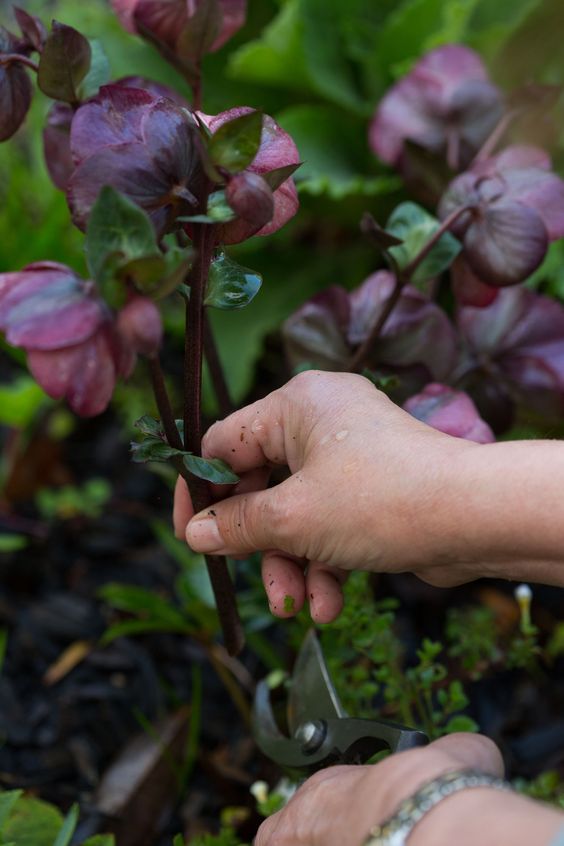
You have the decision to make if you’re working with other hellebore kinds like Helleborus foetidus or the Stinking Hellebore. After flowering, the thicker, higher stems of these plants can be cut back to prevent further reproduction. You have to wait till they produce seed pods and self-seed before you prune them back to the roots.
Pruning your hellebores on a regular basis will keep them looking healthy and appealing while also preventing them from taking over the garden. All you have to do is spend a few minutes each week deadheading the wasted flowers to prolong the beauty of your hellebores.
3. Throw Away the Old Leaves of Your Hellebores
If you are a Hellebore aficionado, you might be familiar with the destructiveness of Hellebore black death. This viral illness can create straight black markings to show up on the leafage of infected shops. Unfortunately, there’s no cure for it, and the only way is to remove and destroy the affected plant.
Careful removal of infected plant material is important to prevent the spread of Hellebore black death. Do not add hellebore material to your home composting system, as it can contaminate the compost and spread disease. Instead, it is recommended that infected plant material be destroyed by burning or trashing.
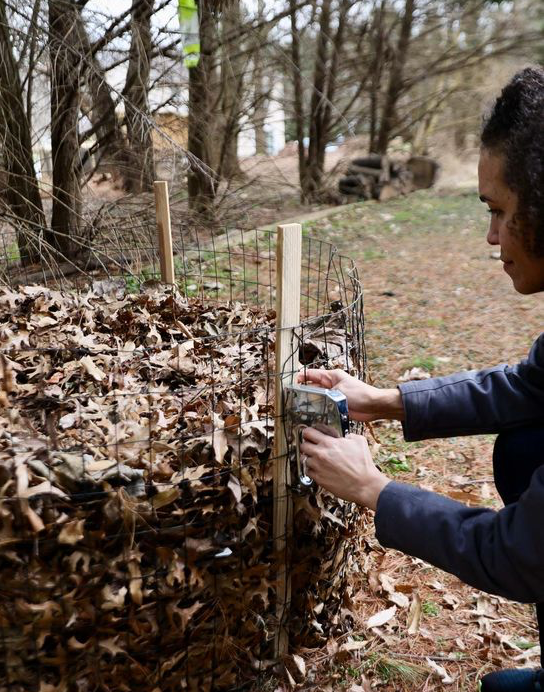
It is also important to take precautions to minimize the risk of infection. Avoid overhead watering as it can create favourable conditions for the spread of fungal and viral diseases. Also, prune hellebore regularly and discard infected plant material immediately. So watch out for hellebore black death signs and act quickly to prevent the spread of this devastating disease.
When to Cut Back Hellebores
To keep these perennials looking their best, it’s important to know when to cut back the Hellebores. The best time to prune a hellebore plant is late winter or early spring, as soon as new growth begins to appear. This is when you see small stems coming out of the ground surrounded by last year’s large leaves.
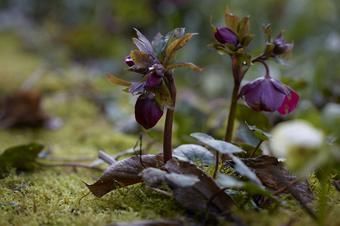
January and February are excellent months to clean up if you want to do so. The plants frequently resemble a mass of leaves at this time of year, and they are surrounded by dead tree leaves and backyard debris. It’s a good idea to cut away any old leaves to keep them healthy and looking their best.
If the old leaves are undamaged and still looking good, you don’t need to prune them right away. However, as soon as new ones begin to sprout, the old ones should be removed to make room. This is important because if the old growth is left for too long, it will become entangled with the new growth and very difficult to cut. When pruning the hellebore, it is important to cut off the old leaves from the base. Removing the old leaves helps prevent pest problems as it deprives snails and slugs of hiding places and kills lurking whiteflies and mould.
Hellebore Pruning Tips
We’ll provide you with some helpful hellebore pruning tips, including what to look for when cutting back your plants. With these tips in mind, you’ll be well on your way to growing healthy, beautiful hellebores that add colour and interest to your garden throughout the year.

- While using sharp pruning shears to remove old, worn-out leaves, you should get as close to the base as possible. As the hellebore grows, the leaves may appear frayed and worn. To keep your plant in top condition, it’s important to remove old buds that have passed their flowering period. Use sharp scissors to make a clean cut.
- Helleborus flowers bloom at the tip of the stem, so it is important not to cut flower buds accidentally or stems when pruning. To avoid this, it’s best to wait until the plant has finished flowering before making large cuts. If pruning is required during the growing season, be careful not to cut off potential buds or stems.
- Hellebore produces a sap that can irritate the skin. Therefore, it is important to wear gloves when pruning. If you come into contact with the sap, wash the affected area thoroughly with soap and water.
- It is important to thoroughly clean the scissors after use to prevent the spread of disease. To do this, wipe it with a cloth soaked in rubbing alcohol. It’s also important to wear gloves to protect your hands.

- Dead and diseased leaves can attract pests and diseases, so it’s important to remove them as soon as possible. You can do this at any time of the year, but it’s best to do it as soon as you notice a problem. To prevent the spread of disease, prune affected leaves and be sure to throw them in the trash, not in the compost pile.
- Hellebore sometimes suffers winter damage, which can cause the leaves to turn brown or black. In this case, wait until late winter or early spring to cut back damaged leaves. This gives the plant time to recover and produce new growth before entering the next growing season.
- Use a hand trimmer to remove old, ragged leaves carefully. A hand trimmer can help remove individual overgrown leaves.
- Do not remove the evergreen leaves of hellebore in the fall. Do not remove the leaves in the fall, as they continue to provide the plant with energy and nutrients throughout the winter. Wait until late winter or early spring to remove old or damaged leaves.
- Hellebore flowers look great in vases, even if they are faded. So if it’s hard to take the plunge, cut them off and enjoy your last few weeks there.
Advantages of Pruning
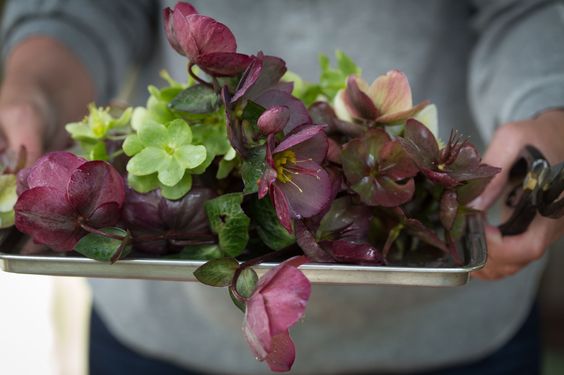
Pruning hellebores is an easy process, and it offers a number of advantages:
- Pruning hellebores helps stimulate the growth of new branches and leaves, which can enhance the plant’s appearance and give it a fuller, more beautiful look.
- Removing dead or diseased foliage helps to stop the spreading of illness and also improves the health of the plant as a whole.
- Pruning boosts flowering by removing old or spent flowers, which can lead to more plentiful and long-lasting blooms.
- Pruning helps you shape the plant to your preferred size and form, which will make it look aesthetically pleasing.
- Hellebores have a lot of seeds that can build a dense colony through self-seeding. Self-seeding is avoided, and the plant can be kept under control by pruning.
Types of Hellebores
Hellebore is a favourite plant for gardeners around the world due to its early blooming, unique colour, and ability to grow in shaded areas. Here are some popular hellebore varieties that you can consider growing in your garden:
- Anna’s Red: This variety features beautiful reddish-purple flowersand pink-striped leaves. Best suited for zones 4 to 9.
- Amber Gem: This plant has showy golden flowers with pink edges. It can be grown in zones 5-8.
- Philip Ballard: This strain features dark blue, almost black flowers and can be grown in zones 6 to 9.
- Citron: With its primrose-yellow flowers, ‘Citron’ is an eye-catcher in any garden. She is best suited for zones 6 to 9.
- Angel Glow: This strain produces pale pink buds that turn green over time. It grows in zones 6-8.
- Wester Frisk: This hellebore has reddish stems and petioles. The greenish flowers are bordered in red and purple. Suitable for USDA Zones 6-9.
Summarizing Hellebore Pruning
After all the major discussions on pruning, we finally land up with the conclusion that pruning hellebores are an essential gardening task that will not only enhance the appearance of the plant but also promote healthy growth and longevity.
By following the guidelines outlined in this article, you can confidently prune your hellebores with ease, ensuring they grow beautifully year after year. Remember always to wear gloves when handling hellebores and to use sharp and sterile tools to prevent the spread of disease.
With their stunning blooms and unique foliage, hellebores are a valuable addition to any garden, and proper pruning will help ensure their continued beauty for years to come.


